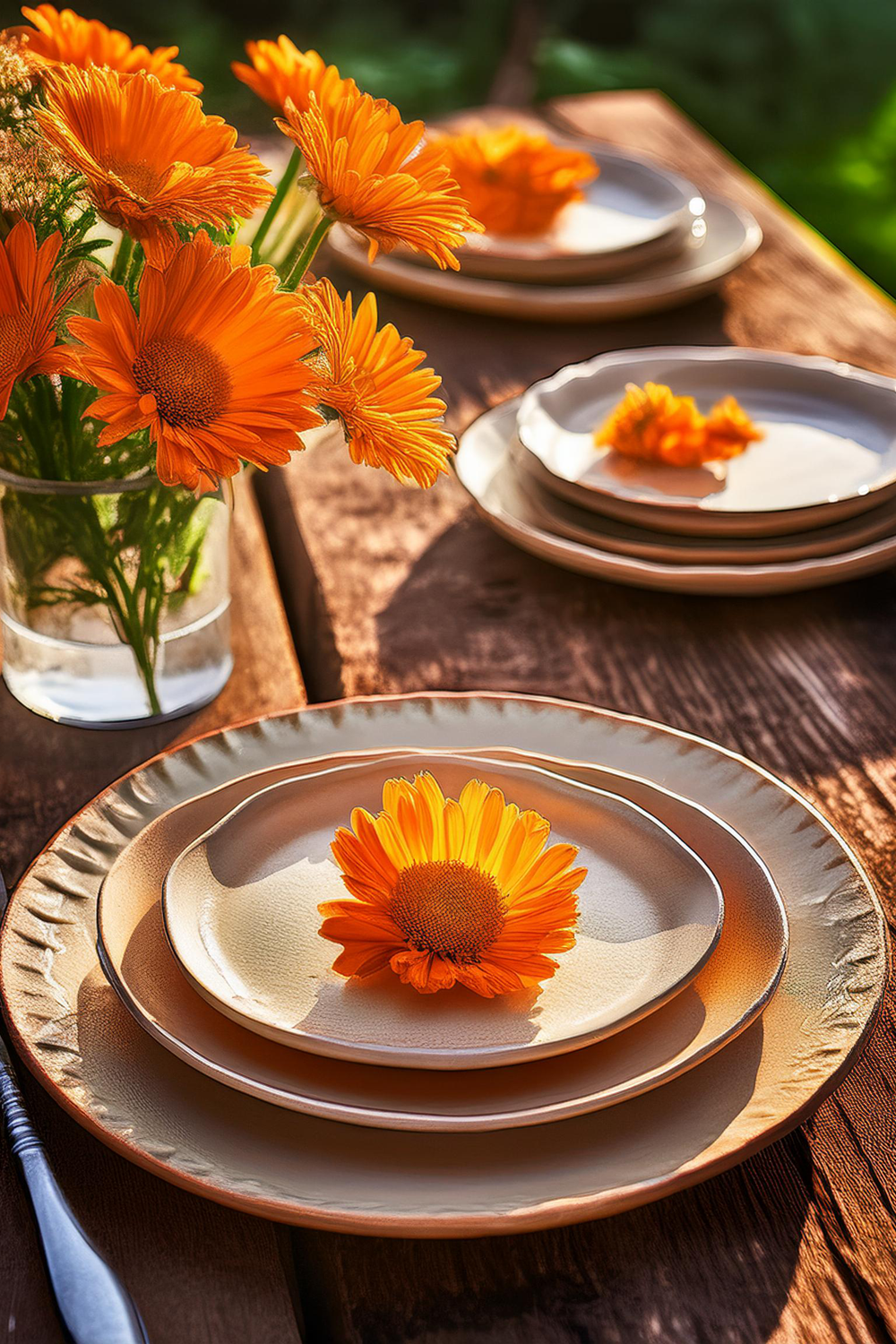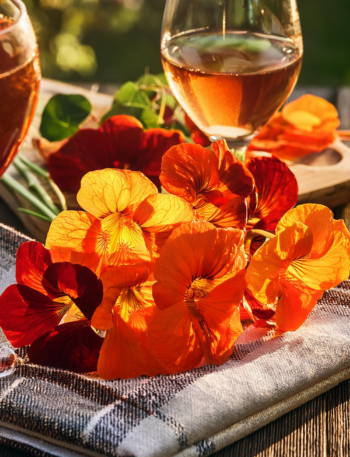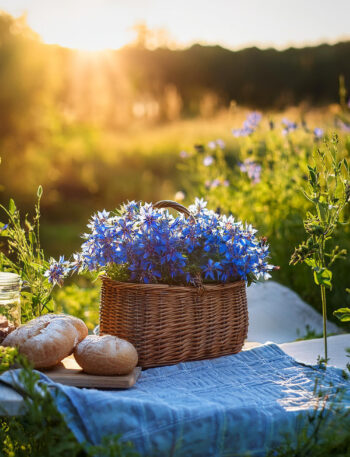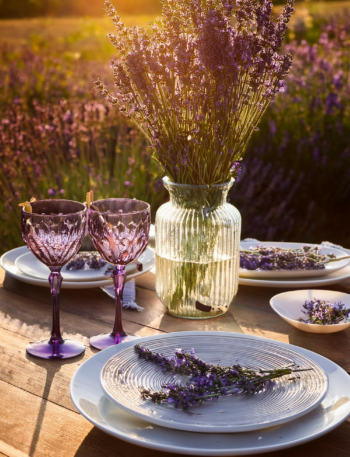“Calendula is the sun’s warmth captured in a bloom, bringing its golden charm to both plate and palate.”
In the quiet warmth of a garden, where golden petals reach for the sun, calendula blooms with a promise—one of both beauty and healing. With its delicate, mildly peppery flavor and rich golden hue, cooking with calendula invites nature’s essence into your kitchen. Its soft tang enhances dishes in ways both savory and sweet, a whisper of summer even in the chill of winter. Each petal, bright and inviting, carries not only flavor but a reminder of nature’s abundant gifts.

To cook with calendula is to embrace a gentle connection to the earth. This humble flower, revered for centuries for its healing powers, offers more than just a visual delight. Infused in teas, sprinkled on salads, or incorporated into savory sauces, calendula brings a subtle depth to every bite. Beyond its flavor, it offers anti-inflammatory properties and boosts immunity, making it both a culinary treasure and a natural remedy. It’s a flower that nurtures the body, mind, and spirit with every petal.
Why Cook with Calendula
- Flavor Profile: Offers a mildly tangy, slightly peppery taste with earthy undertones, adding subtle depth to dishes.
- Natural Color: Brings vibrant golden hues to recipes, acting as a beautiful garnish or seasoning.
- Culinary Versatility: Enhances savory dishes like soups, risottos, and stews. Complements sweet recipes such as cakes, teas, and syrups. Infuses oils, vinegars, and butters with its essence.
- Health Benefits: Known for its anti-inflammatory and healing properties, calendula has a long history in herbal remedies. For more insights into the health benefits of edible flowers, explore this guide on the health benefits of edible flowers to discover how nature’s blooms can enhance your wellness.
- Seasonal and Accessible: Grows abundantly in home gardens, making it an easy-to-source and sustainable ingredient.

Choosing the Right Calendula for Cooking
- Choose Vibrant Blooms: Select calendula flowers with bright, golden petals, free of blemishes or discoloration.
- Check for Freshness: Avoid blooms with wilting, browning, or damaged petals to ensure optimal flavor and quality.
- Opt for Pesticide-Free Flowers: Use organically grown calendula to avoid harmful chemicals and preserve its natural essence. To learn more about sourcing edible flowers safely, check out this guide on health benefits of edible flowers.
How to Use Calendula in Cooking
Try Calendula in Cooking: Ready to experiment with calendula in a savory dish? Check out my Holiday Spiced Cranberry & Calendula-Glazed Ham recipe for a festive, flavorful twist!
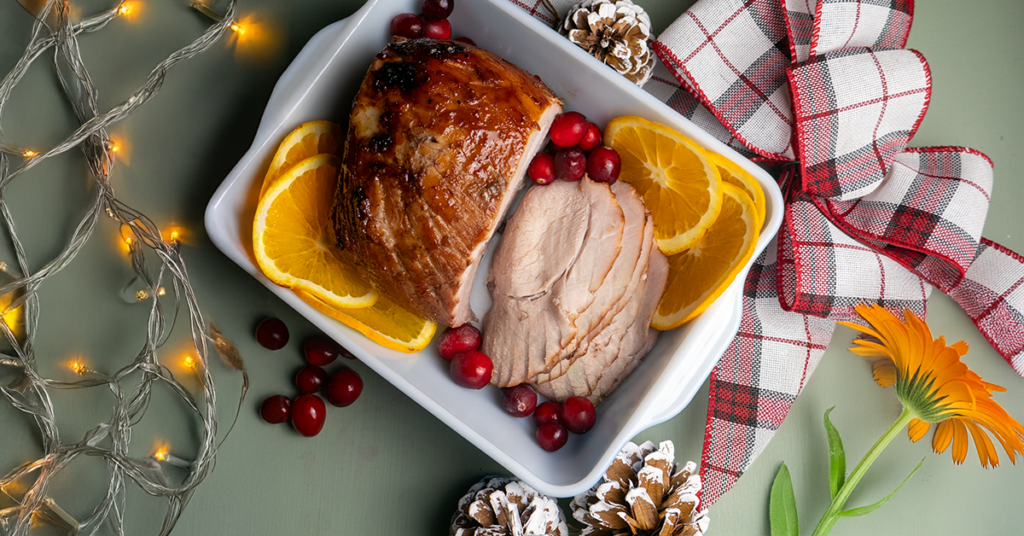
- Calendula Salad Garnish
Sprinkle fresh petals over greens for a pop of color and a mild, earthy taste. - Calendula-Infused Oil
Infuse olive oil with dried petals to create a fragrant, golden oil for dressings or sautéing. - Calendula Tea
Brew dried petals into a soothing, healing tea with a gentle floral aroma. - Calendula Rice or Grain Dishes
Mix petals into cooked rice or grains to add color and subtle flavor. - Calendula Honey
Steep petals in honey for a golden-hued, floral sweetener perfect for desserts or tea.
Discover the Art of Cooking with Flowers
Unleash your culinary creativity with our introduction to floral-infused cuisine. Explore the beauty, flavor, and artistry of edible blooms in your kitchen.
👉 Read The Art of Cooking with Flowers and let your dishes blossom!
Preparation Tips
Harvest Wisely: Pick calendula flowers in the morning after the dew has dried but before the sun becomes too intense. This preserves their vibrant color and flavor.
Choose Fresh Blooms: Select flowers that are fully open, vibrant, and free from blemishes or discoloration.
Remove Bitter Parts: Gently pluck the petals from the flower heads and discard the green base (calyx) as it can be bitter.
Rinse Delicately: Rinse the petals in cold water to remove dirt or small insects. Pat them dry with a soft towel or use a salad spinner.
Dry for Storage: If not using immediately, dry calendula petals by spreading them in a single layer on a clean surface in a warm, ventilated area. Store the dried petals in an airtight container away from light.
Use Fresh or Dried: Fresh petals are ideal for salads and garnishes, while dried petals work well in teas, baked goods, and infused oils.
Infuse for Flavor: For subtle calendula flavor, infuse petals in liquids like milk, cream, or broths before adding to recipes.
Test Small Amounts: Calendula has a mild flavor, so start with a small amount and adjust to taste as you cook.
Combine for Color: Mix calendula petals with other edible flowers for a visually striking and flavorful dish.
Handle with Care: Avoid overcooking petals to retain their color and delicate texture. Add them at the end of cooking when possible.

Flavors That Pair Well with Calendula
Calendula’s mild, slightly peppery, and earthy flavor pairs beautifully with a variety of ingredients, enhancing both savory and sweet dishes. Here are some flavors that complement calendula:
- Citrus: Bright flavors like lemon, orange, and grapefruit enhance calendula’s subtle floral notes.
- Herbs: Pair with thyme, parsley, mint, or dill for fresh, aromatic combinations.
- Spices: Mild spices like turmeric, saffron, and coriander complement calendula’s warm undertones.
- Sweet Notes: Honey, vanilla, and almond bring out its delicate floral hints in desserts or teas.
- Vegetables: Root vegetables like carrots and parsnips, or leafy greens such as spinach and arugula, blend well with calendula.
- Dairy: Creamy textures like butter, cream, or soft cheeses (such as ricotta or goat cheese) harmonize with calendula’s earthy flavor.
- Grains: Quinoa, rice, or couscous absorb calendula’s golden hue and subtle taste beautifully.
- Fruits: Berries, stone fruits, and apples add a sweet contrast to calendula’s mild bitterness.
Experiment with these pairings to create dishes that highlight calendula’s natural charm!
The Health Benefits of Calendula
- Anti-Inflammatory Benefits: Calendula’s natural compounds, such as flavonoids and triterpenoids, help reduce inflammation, making it soothing for digestive discomfort and irritated tissues.
- Rich in Antioxidants: Packed with carotenoids and polyphenols, calendula combats free radicals, promoting healthier skin and reducing signs of aging.
- Supports Wound Healing: Known for its antibacterial and antiseptic properties, calendula aids in speeding up the healing of cuts, burns, and minor skin irritations.
- Boosts Immunity: Calendula contains compounds that may enhance the immune system’s response, helping to ward off infections.
- Calms Skin Conditions: Often used in topical applications, calendula can relieve eczema, acne, and other skin inflammations due to its soothing properties.
For more insights into the health benefits of edible flowers, explore this guide on the health benefits of edible flowers to discover how nature’s blooms can enhance your wellness.
Tips for Using Calendula in Cuisine
- Start Small: Calendula’s flavor is mild, so it’s easy to adjust.
- Dry Carefully: Preserve color by drying petals in a dark, cool space.
- Pair with Bright Ingredients: Calendula’s earthy tones shine when balanced with citrus or fresh herbs.
- Experiment in Baking: Use petals to add a golden hue and texture to cakes or muffins.
- Infuse Oils or Vinegars: Calendula’s properties and flavor are beautifully captured in oils and vinegars.

Looking for more inspiration? Explore a world of floral-infused creations in our Recipe Collection and let your culinary journey bloom!
Common Mistakes When Cooking with Calendula
Using Non-Edible Varieties: Not all calendula is grown for culinary use. Ensure you’re using Calendula officinalis, as ornamental varieties may not be safe to eat or have a bitter taste.
Skipping Proper Cleaning: Calendula petals can harbor dirt or small insects. Always rinse them gently and pat them dry before using in recipes.
Overheating the Petals: Prolonged exposure to high heat can diminish calendula’s mild, earthy flavor and vibrant color. Add petals toward the end of cooking for maximum impact.
Using Too Many Petals: Overloading a dish with calendula can result in an overly bitter or grassy flavor. Start with a moderate amount and adjust to taste.
Not Drying Properly: When drying calendula for later use, insufficient drying can cause mold growth. Make sure the petals are thoroughly dried before storing.

Storing and Preserving Calendula for Culinary Use
Calendula, also known as pot marigold, can be easily preserved for culinary use to enjoy its vibrant flavor and healthful properties year-round. To store calendula, start by harvesting the flowers when they are fully open and dry, ideally in the morning after the dew has evaporated. Remove the petals from the flower heads and spread them in a single layer on a clean, dry surface or a mesh screen in a well-ventilated area away from direct sunlight. Once completely dried, store the petals in an airtight container in a cool, dark place to preserve their color and flavor. Alternatively, you can freeze calendula petals by spreading them on a baking sheet, freezing until firm, and transferring them to a sealed container or freezer bag. Dried petals can be used to make herbal teas, infused oils, or as a colorful garnish, while frozen petals are great for soups, stews, and baked goods. Properly stored, calendula retains its quality for 6 to 12 months.
Conclusion: A Blooming Culinary Journey
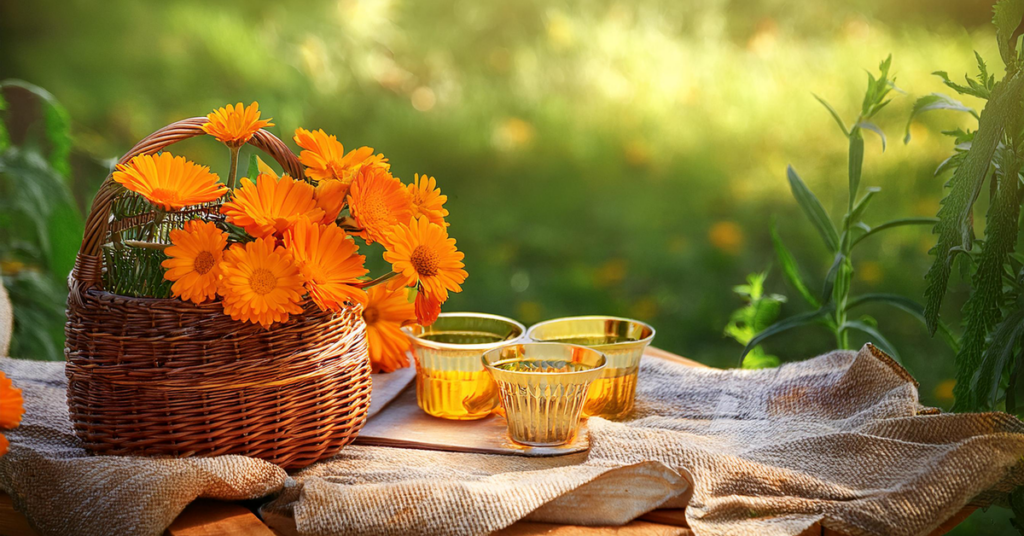
Cooking with calendula is a graceful dance between nature and nourishment, a way to infuse your creations with the sun’s golden whispers. Each petal tells a tale of vibrant beauty and quiet resilience, reminding us of the elegance in simplicity. Whether scattered over a fresh salad, steeped into a soothing tea, or folded into your favorite dish, calendula brings warmth, color, and a touch of magic. Embrace the art of cooking with calendula, and let your meals blossom into radiant expressions of the garden’s bounty.
Frequently Asked Questions (FAQ)
Yes, as long as they are pesticide-free and grown organically.
Spread petals in a single layer in a warm, dark place for a week.
Salads, teas, infused oils, soups, and baked goods are excellent choices.
Absolutely! It adds color and mild flavor to cakes, cookies, and syrups.

